BMW Vision Neue Klasse resets the company’s future electric strategy
A minimal, pure design with reduced materials and components, the BMW Vision Neue Klasse updates the core visual elements of the brand
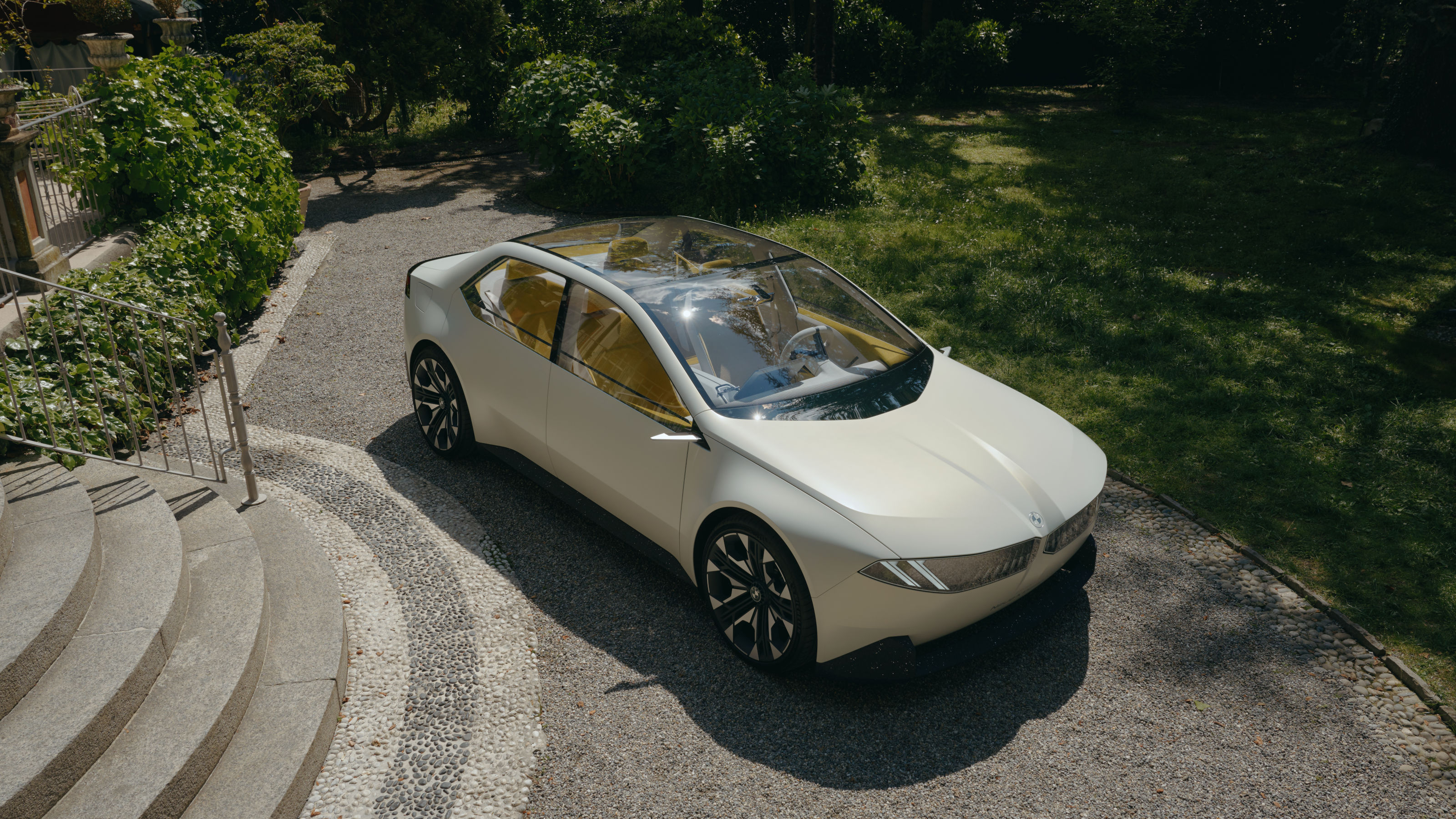
One of the stars of this year’s IAA Mobility International Motor Show in Munich, BMW’s Vision Neue Klasse is a bold statement of the future of what was once the company’s core segment, the traditional saloon car. Once dominant, the ‘three box’ saloon’s popularity has been steadily eroded by the relentless rise of SUVs.

BMW Vision Neue Klasse
Vision Neue Klasse is a bold attempt to right the ship and give modern form to the visionary, forward-looking forms assembled by the likes of Wilhelm Hofmeister back in the 1960s and 1970s. ‘The design of the Neue Klasse is typically BMW and so progressive it looks like we skipped a model generation,’ says the current head of BMW Group Design, Adrian van Hooydonk.

BMW Vision Neue Klasse
The Vision car is a concept only, and BMW’s show cars are invariably a few steps removed from the resulting production model. That said, there’s nothing about this handsomely minimal machine that couldn’t be manufactured, and elements like the use of secondary raw materials and full electric power are pretty much standard features already.
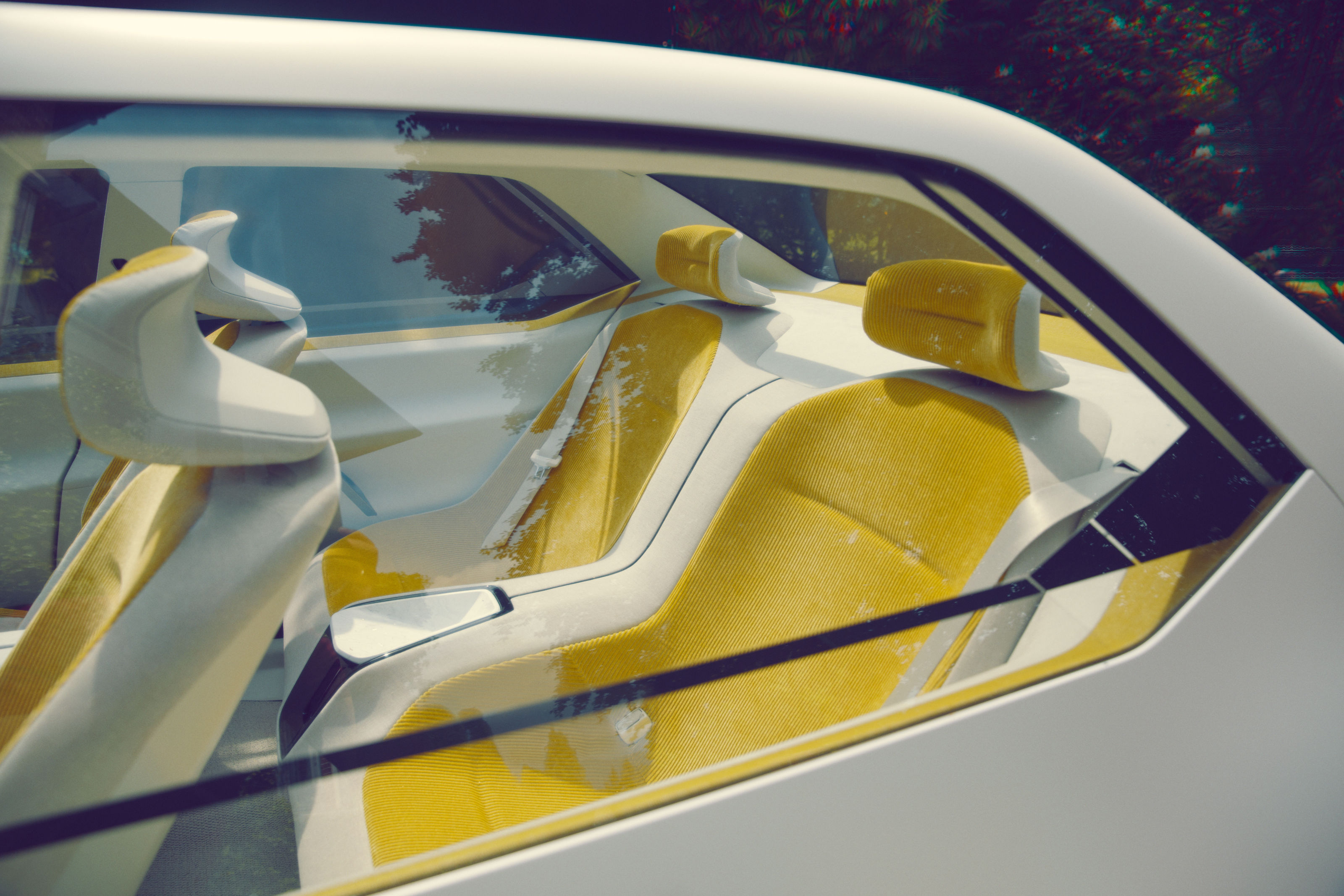
BMW Vision Neue Klasse, showing the signature Hofmeister kink
The concept is also notable for its emphasis on key BMW design elements like the so-called ‘Hofmeister kink’, the curve on the C-pillar that has been an integral part of practically every BMW for half a century. It also presents a more coherent BMW kidney grille, bleeding the form into the full width of the frontal area, with integrated headlights and a pronounced central division.

The BMW Vision Neue Klasse alongside the BMW i Vision Dee (2023) and the BMW i Vision Circular (2021)
The company stresses that every facet of this concept represents a sizeable advance, including ‘30 per cent more range, 30 per cent faster charging, [and] 25 per cent more efficiency’. Inside, there’s a new generation of BMW’s pioneering iDrive HMI working in harmony with ‘BMW Panoramic Vision’, a head-up display system that projects information across the entire width of the windscreen.

BMW Vision Neue Klasse interior with full-width head-up display
Elsewhere, the cabin is finished in typically minimal concept style, with yellow corduroy making a welcome change from traditional interior. The company notes that the absence of decorative leather and chrome is another obvious way of keeping the car’s carbon footprint as low as possible.

BMW Vision Neue Klasse interior uses corduroy
Why is this concept important? After squandering its impressive lead in electrification to its rivals, BMW knows it needs to re-set its EV strategy and ensure that manufacturing and innovation are perfectly aligned with a new design vision. This car points the way to next-generation mobility; expect elements of the Vision Neue Klasse to creep into BMW’s production vehicles over the next two to three years.
Wallpaper* Newsletter
Receive our daily digest of inspiration, escapism and design stories from around the world direct to your inbox.
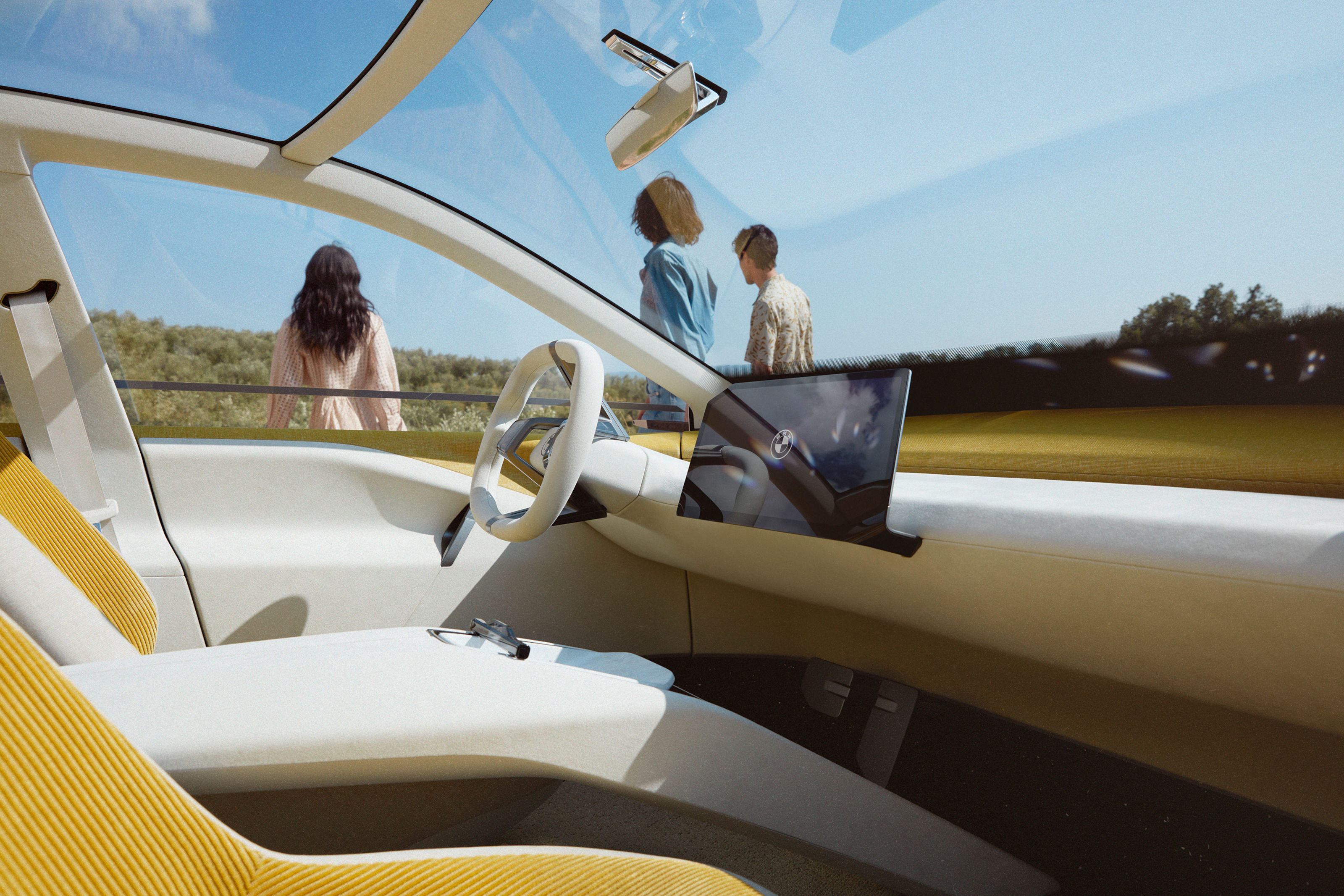
BMW Vision Neue Klasse
More information at BMW.co.uk
Jonathan Bell has written for Wallpaper* magazine since 1999, covering everything from architecture and transport design to books, tech and graphic design. He is now the magazine’s Transport and Technology Editor. Jonathan has written and edited 15 books, including Concept Car Design, 21st Century House, and The New Modern House. He is also the host of Wallpaper’s first podcast.
-
 Croismare school, Jean Prouvé’s largest demountable structure, could be yours
Croismare school, Jean Prouvé’s largest demountable structure, could be yoursJean Prouvé’s 1948 Croismare school, the largest demountable structure ever built by the self-taught architect, is up for sale
By Amy Serafin Published
-
 A freshly remastered classic Range Rover brings unexpected Italian style to a British icon
A freshly remastered classic Range Rover brings unexpected Italian style to a British iconItalian company Vinile’s Range Rover Classic restomod made its debut at Milan Design Week, showcasing local craftsmanship and engineering updates
By Jonathan Bell Published
-
 Yves Béhar designs a wash basin for Laufen that goes with the flow
Yves Béhar designs a wash basin for Laufen that goes with the flowInspired by the movement of water and to be produced in a CO2-free electric kiln, ‘Volta’ has an innovative circular form
By Ifeoluwa Adedeji Published
-
 BMW celebrates half a century of its pioneering Art Car project with exhibitions and more
BMW celebrates half a century of its pioneering Art Car project with exhibitions and moreWe present a portfolio of the artists who have contributed to 50 years of BMW Art Cars, including Andy Warhol, John Baldessari, Jenny Holzer and David Hockney
By Jonathan Bell Published
-
 Peruse the new BMW Group Archive to explore the evolution of BMW design over the decades
Peruse the new BMW Group Archive to explore the evolution of BMW design over the decadesFor lovers of the marque, BMW’s commitment to online archiving is second to none. The latest website from the Bavarian manufacturer is this extensive visual catalogue of 80 years’ worth of BMW design
By Jonathan Bell Published
-
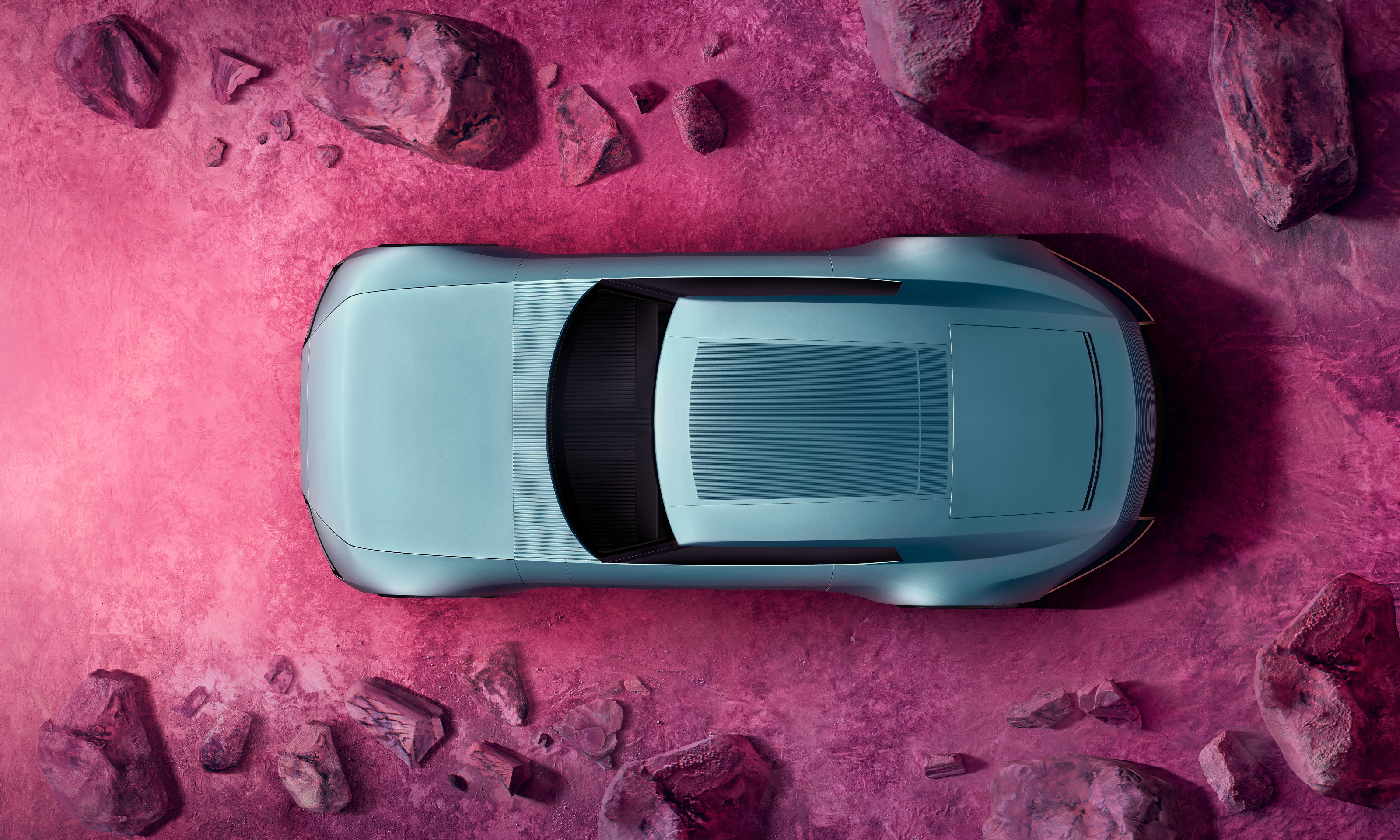 The top 10 concept cars of 2024, as selected by Wallpaper’s Transport Editor
The top 10 concept cars of 2024, as selected by Wallpaper’s Transport EditorWe round up our favourite forays into futuristic design with this collection of concepts and design studies showcasing the transport of tomorrow
By Jonathan Bell Published
-
 New BMW i5 Touring is an all-electric tech powerhouse that brings the noise
New BMW i5 Touring is an all-electric tech powerhouse that brings the noiseBMW has thrown its considerable expertise into making the i5 eDrive40 M Sport Pro Touring the ultimate zero-emission all-rounder. Jonathan Bell tries it out
By Jonathan Bell Published
-
 BMW’s limited-edition Skytop roadster draws on the past. Could it also predict the future?
BMW’s limited-edition Skytop roadster draws on the past. Could it also predict the future?Just 50 examples of the BMW Skytop are being built, and they’ve all been spoken for. We examine whether this classically styled machine is a harbinger of aesthetic change
By Jonathan Bell Published
-
 The 2024 Goodwood Festival of Speed hosted a wealth of auto innovation, from hypercars to hot hatches
The 2024 Goodwood Festival of Speed hosted a wealth of auto innovation, from hypercars to hot hatchesThe best new SUVs, EVs, hatchbacks and supercars to emerge from the 2024 Goodwood Festival of Speed
By Jonathan Bell Published
-
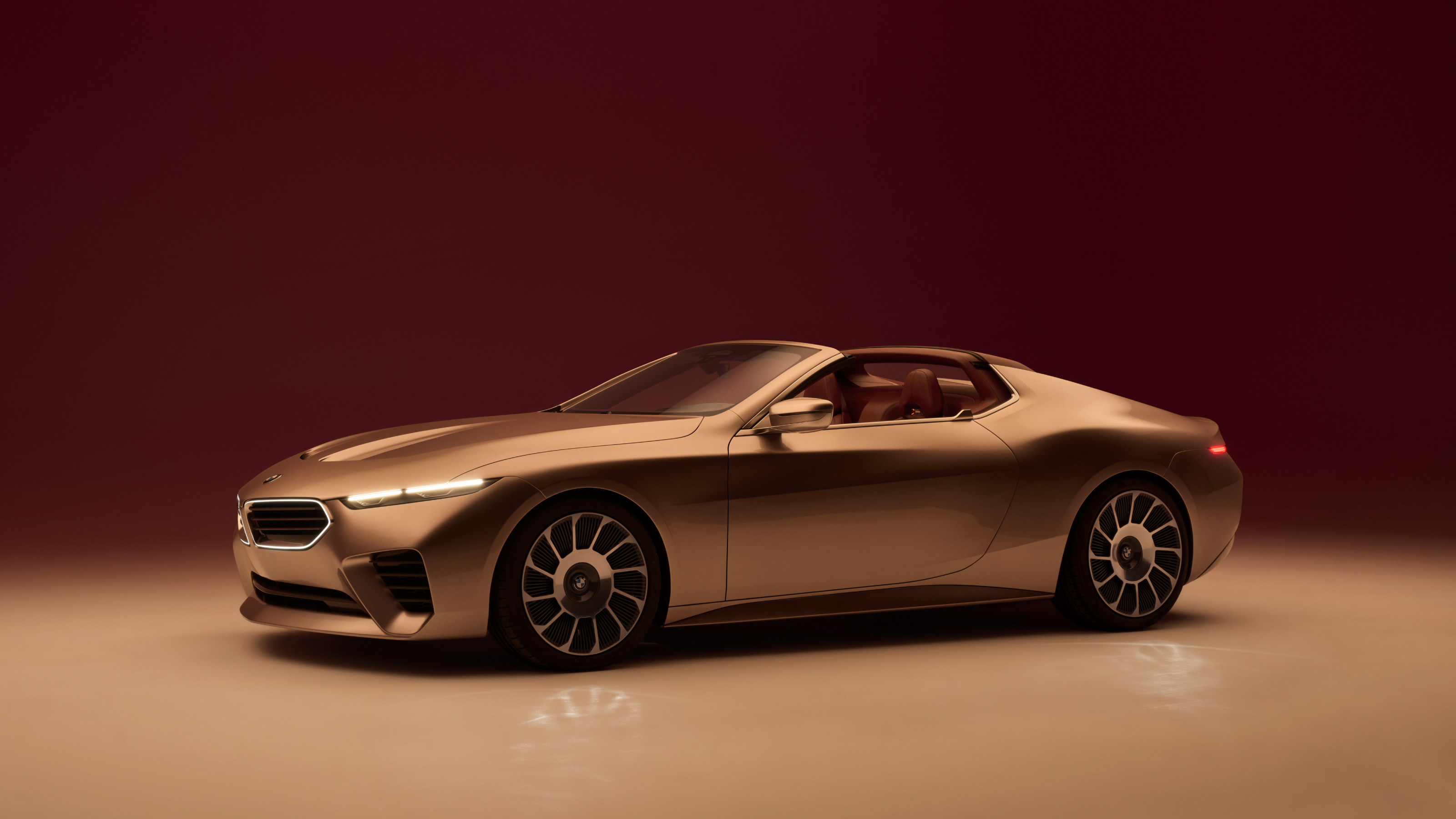 The Concept Mercedes-AMG PureSpeed and BMW Concept Skytop offer drop-top dreams
The Concept Mercedes-AMG PureSpeed and BMW Concept Skytop offer drop-top dreamsBMW and Mercedes-AMG open up with two new convertible concepts, one pitched at performance, the other at the spirit of the good life
By Jonathan Bell Published
-
 BMW launches its latest supermodel, the BMW XM Mystique Allure
BMW launches its latest supermodel, the BMW XM Mystique AllureThe haute couture-inspired BMW XM Mystique Allure, dedicated to Naomi Campbell and with a soundtrack by composer Hans Zimmer, makes its debut at Cannes International Film Festival 2024
By Simon Mills Published